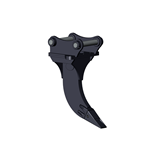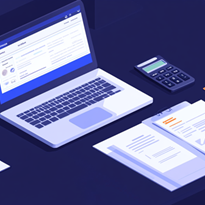Explore financing solutions for used excavators. Learn about low-doc loans, balloon payments, and how to secure approval fast in Australia.
Key takeaways
- Used excavator finance amounts typically range between $20,000 and $250,000+ depending on size, brand, and age. Most finance terms sit between 3 to 5 years, with interest rates from 7.5% to 11.5% p.a.
- Excavators over 10 years old often require a 20%+ deposit or may attract higher interest rates.
- To get approved, lenders typically assess your ABN age, credit score, cash flow, and the quality and condition of the asset.
- Chattel mortgages are the most common and tax-effective financing option. Other options include hire purchase and low-doc loans for those with limited financials.
- A $100,000 used excavator loan over five years at 9.5% interest typically results in monthly repayments around $2,100 (with no balloon).
- Finance brokers help improve approval odds by finding lenders that specialise in used equipment and structuring repayments to suit your cash flow.
- Common loan traps include failing to inspect equipment properly, taking on high balloon payments, ignoring lender restrictions on private sales, or not checking the PPSR for encumbrances.
- A pre-approval can give you stronger negotiating power and ensures you’re ready to act when the right excavator pops up.
Introduction: Why used excavator finance needs careful planning
Used excavators are in high demand across construction, civil works, and earthmoving operations. They’re often more cost-effective than new units, offer strong resale value, and can be sourced quickly when projects ramp up.
But financing used equipment comes with different considerations than financing new. Lenders are more cautious about older machines, and it’s critical to present your business and the asset in the best possible light to secure a fair deal.
In this guide, we’ll break down how used excavator finance works in Australia, what loan options are best, how to avoid common traps, and how to make lenders say “yes”.
Your main finance options explained
Chattel mortgage (ideal for most buyers)
A chattel mortgage is the most common loan product used for excavator finance in Australia. You take ownership of the asset upfront, and the lender holds it as security until the loan is repaid.
It’s ideal for businesses wanting to claim GST, depreciation, and interest as tax deductions (provided you’re GST-registered).
Loan terms typically range between 2 and 5 years, and some lenders offer balloon payment options to reduce monthly repayments. For example, a $90,000 loan with a 20% balloon over 5 years could bring monthly repayments down to around $1,380, depending on your interest rate.
Hire purchase
Similar to a chattel mortgage, a hire purchase lets you pay for the equipment over time, but you don’t technically own it until the final repayment is made. This structure can work for businesses wanting to spread out GST or ownership.
It’s less common than chattel mortgages but useful for those with specific tax or accounting needs.
Low-doc equipment finance
If your business is relatively new or lacks full financial documentation, low-doc loans may be a viable path. These are often used for loans up to $150,000, depending on the lender.
To qualify, you’ll usually need:
- An active ABN (6–24 months minimum)
- A clean credit file
- Recent bank statements showing business activity
- A supplier invoice or equipment details
Low-doc loans generally attract higher interest rates (9.9%–13.5%) and may require a larger deposit—typically 10% to 30% of the equipment value.
What lenders look at before approving your finance
Used gear poses more risk than new, so lenders take a closer look at both your business and the asset. Key criteria include:
Asset age and condition
Lenders are cautious with machines that are more than 10 years old or have excessive hours. Equipment with service history and known resale value is more favourably assessed.
Your business profile
Ideally, your ABN should be at least 12 months old (some lenders require 24). You’ll also need to demonstrate a solid cash flow via bank statements or BAS. Newer businesses can still qualify but may face tighter conditions.
Credit history
Lenders will review your personal and business credit history. A clean report improves approval odds and can help secure a better interest rate. If you’ve had credit issues in the past, a strong business case and broker support are essential.
Deposit
While some lenders offer 100% finance, most prefer a 10% to 20% deposit—especially if the machine is older or sourced from a private seller.
How a finance broker helps with used equipment loans
Used equipment finance isn’t one-size-fits-all. A specialist broker helps you avoid lenders who don’t understand the asset, don’t fund private sales, or undervalue second-hand machinery.
An experienced broker will:
- Match you with lenders who actively finance second-hand gear
- Structure repayments (e.g. with or without balloons) to suit your cash flow
- Help prepare your application to meet lender criteria
- Secure pre-approval so you’re ready to buy
- Negotiate more competitive rates on your behalf
This is especially valuable for businesses with newer ABNs, past credit issues, or specialised needs.
Common finance mistakes to avoid
Here’s what to watch out for when financing a used excavator:
Failing to check the PPSR
Always check the Personal Property Securities Register (PPSR) to ensure there’s no outstanding finance on the machine. It costs just $2 and could save you tens of thousands in legal issues.
Buying without proper inspection
Some lenders require a third-party inspection report—especially if the seller is private. It protects you and the lender from buying defective machinery.
Accepting a big balloon payment without planning
Balloon payments can lower your monthly repayments but leave a large amount owing at the end. Make sure your cash flow can cover it, or have a plan to refinance or sell the machine.
Ignoring lender restrictions
Some lenders won’t finance gear bought privately, imported directly, or from auction. Others might not fund machines over a certain age or without documentation.
Choosing the wrong term
A shorter term reduces interest paid, but increases monthly repayments. Choosing a five-year term over three years can ease pressure on cash flow—but be sure it aligns with the asset’s expected working life.
Real-world finance examples (what your repayments could actually look like)
Understanding how used excavator finance plays out in real terms can help you budget more confidently. Below are three typical finance scenarios based on current market rates and conditions in Australia. These examples show how purchase price, loan term, balloon structure, and interest rate impact your monthly repayments.
Scenario 1: Compact excavator for landscaping or small-scale civil works
- Machine cost: $40,000
- Loan term: 3 years
- Balloon payment: None
- Interest rate: 10% p.a.
- Estimated monthly repayment: approx. $1,290/month
This setup suits businesses that want to own the asset outright at the end of the term, with no residual. It's a good match for sole traders or smaller operators in landscaping, fencing, or trenching who rely on compact excavators for day-to-day work.
Why this works:
- No balloon means no lump-sum shock at the end of the loan
- Short term reduces total interest paid
- Suitable for newer businesses with consistent cash flow
Watch out for:
- Higher monthly repayments may be harder to sustain during off-seasons
- May strain working capital if you’re also buying other gear
Scenario 2: Mid-sized machine for general construction or plumbing business
- Machine cost: $75,000
- Loan term: 4 years
- Balloon payment: 20% ($15,000)
- Interest rate: 9% p.a.
- Estimated monthly repayment: approx. $1,490/month
This scenario suits tradies or mid-tier contractors looking to upgrade their machine fleet while keeping monthly repayments manageable. Adding a 20% balloon helps reduce ongoing costs while preserving working capital.
Why this works:
- Balloon payment lowers monthly outgoings
- 4-year term balances cost and flexibility
- May allow bundling in attachments or GPS fit-out as part of the finance deal
Watch out for:
- Balloon must be paid or refinanced at end of term
- Over-capitalising on older machines may affect resale value later
Scenario 3: Large 20+ tonne excavator for heavy civil or earthmoving contractor
- Machine cost: $120,000
- Loan term: 5 years
- Balloon payment: 20% ($24,000)
- Interest rate: 9.5% p.a.
- Estimated monthly repayment: approx. $2,030/month
This structure is common for established operators with larger contract work in bulk excavation, roadworks or mining support. A longer term with a balloon helps align repayments with job cash flow and contract cycles.
Why this works:
- Preserves liquidity for fuel, transport, and ongoing servicing
- Allows tax benefits from depreciation and interest over a longer period
- Long loan term suits the asset’s productive working life
Watch out for:
- Resale value must cover balloon if planning to offload
- Total interest paid is higher over 5 years
- Repairs or downtime on older large machines can affect ROI if not factored in
Summary insights from these scenarios:
- No balloon = faster ownership, but higher monthly outgoings
- Balloon structures = lower monthly repayments, but you’ll need a strategy to cover the residual
- Shorter terms = less interest, but more pressure on monthly cash flow
- Longer terms = better flexibility, but more cumulative interest and risk if asset value drops
All these examples assume relatively clean credit, an active ABN of 12+ months, and that the equipment is being used to generate business income. Your rate and repayments may differ depending on your financials, GST status, and lender appetite for used gear.
A broker can model these scenarios based on your actual turnover and work pipeline to recommend what makes sense—not just what looks good on paper.
FAQs: Used excavator finance in Australia
Can I get finance for a machine older than 10 years?
Yes, but you’ll need a stronger case. That usually means a larger deposit, clear service history, and a lender that’s comfortable funding older assets.
What’s the minimum finance amount?
Most lenders set a floor of around $20,000. If your equipment is under this amount, consider a small business loan or pay outright.
Can I buy from a private seller and still get finance?
Yes, but conditions apply. You’ll usually need the seller’s ID, bank details, service history and photos. Some lenders may also require a pre-purchase inspection.
I’m a new business—can I still get approved?
Possibly. If your ABN is under 12 months, you’ll likely need to go through a broker, offer a deposit, and prove strong bank transactions.
Are the repayments tax-deductible?
For most businesses, yes. With a chattel mortgage, you can usually claim depreciation, interest, and GST. Confirm with your accountant before signing.
Final thoughts: Finance that works for your operations
Financing a used excavator is more than just comparing interest rates. The right finance helps your business scale up projects, win more work, and stay cash flow positive.
Whether you're buying a $35,000 mini-excavator for landscaping or a $200,000 machine for large civil contracts, the smartest path is one backed by informed planning, a good broker, and a well-structured loan.
Take the time to pre-qualify, ask the right questions, and align your repayments with how the machine will generate revenue. That way, your equipment becomes a growth driver—not a financial burden.
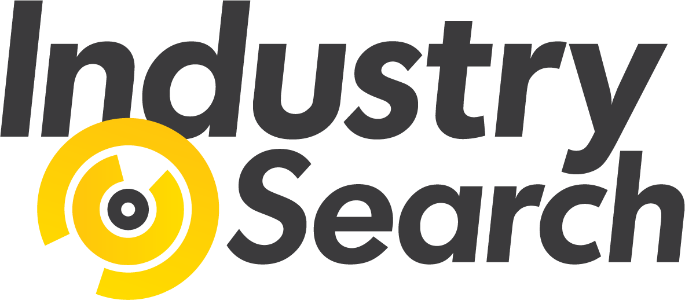

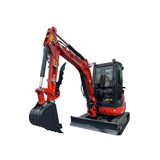
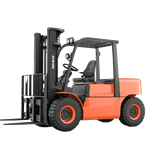




-160x160-state_article-rel-cat.png)





